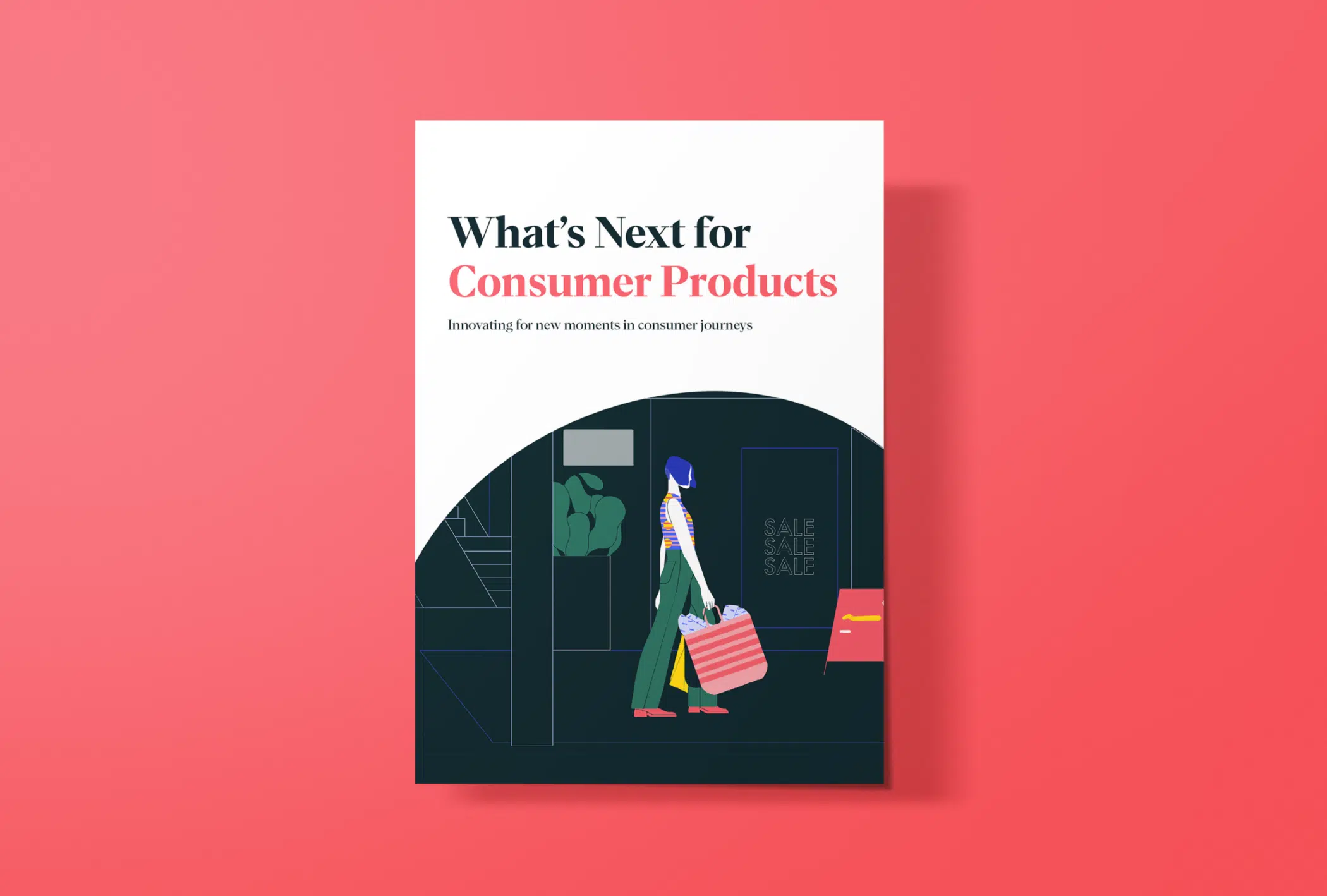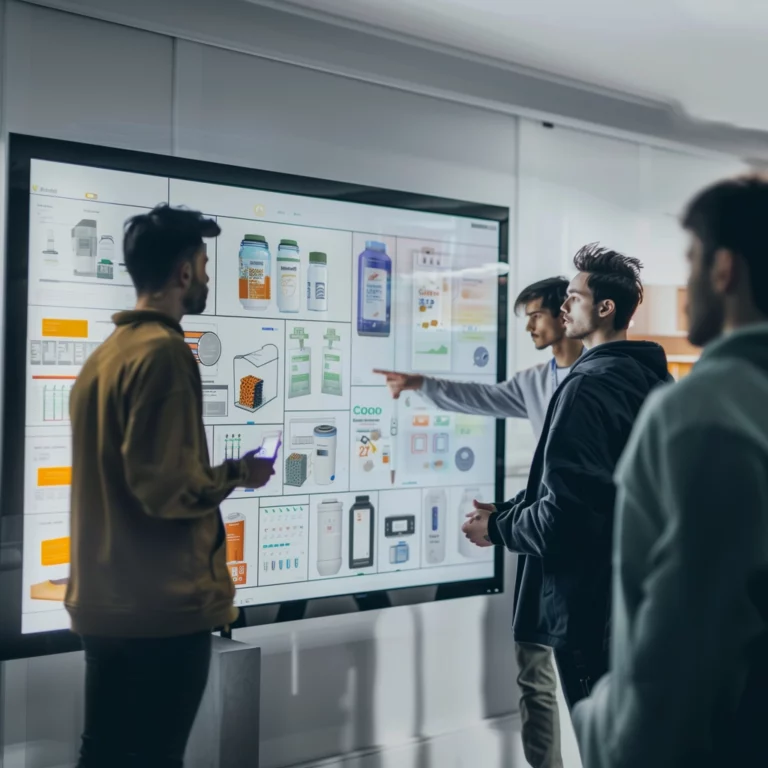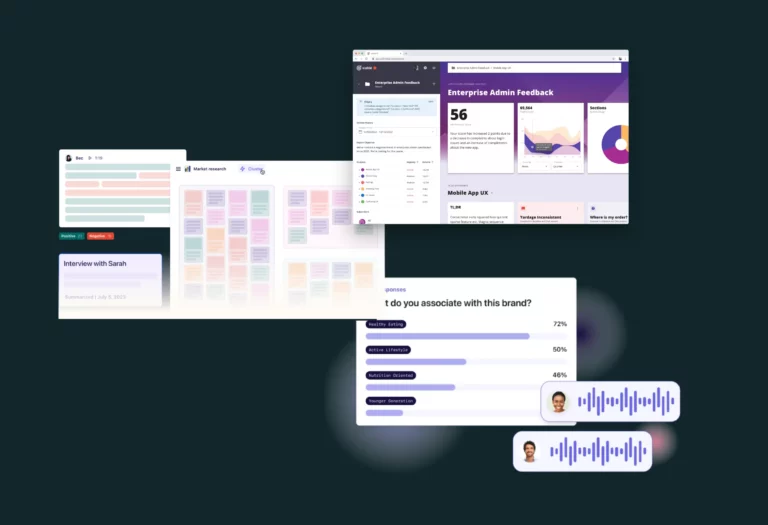The global pandemic halted in-person shopping, causing a huge disruption for consumer products. Longtime practices, aimed at dominating store shelves and grabbing the attention of consumers walking down the aisles, became much less relevant. Things will never go back to the way they were before, even though consumers are returning to physical stores. Every step on the consumer journey has changed and is continuing to change, and consumer products need to change as well to keep up.
In this post, we’ll highlight some of the key moments in the rapidly evolving consumer journey, and what we see as the key questions and implications for the role and development of consumer products with packaging.
01. Discovery is now mostly digital, so packaging should be developed digital-first as well.
Research shows that more consumers are narrowing or making product decisions way before they enter a store, with more exploration as well as more purchasing happening online. Shopping online offers consumers endless new choices, making it much harder for retail brands to build long-term relationships with them. Digital discovery is now more important than ever for reaching retailers as well as consumers, as is evident from the success of ABInBev Brazil Bees.
The design process for packaging solutions should evolve to ensure an initial focus on the discovery assets required to engage these digital-first customers. Putting digital-first up-front in the design process, rather than having it as an after-thought, can decrease the cost and reduce the risk of product development and omni-channel launch. Features such as virtual try-ons, ingredient stories, dynamic pricing and enhanced experience are common features in digital-first brands such as L’Oreal to RightRice, spanning the gamut of beauty to food & beverage.
Most obviously, the viability of packaging solutions depends on whether they will work well in digital marketplaces, so you’d better get that right from the start.
Packaging solutions also need to work on social media platforms and with the influencers who dominate there. How well will the solution work in unboxing videos by influencers? In their videos of using the product? In their reviews? (In beauty, reviews from @nyane or @huda can make or break a product.) Packaging can even be literally a central part of the social media campaign such as Chipolte’s lid flip challenge.
Immersive product experiences, such as 3D and video assets, should also be developed as an intrinsic component of the packaging solution, rather than be developed afterwards as a marketing add-on. For example, the liquor brand Otaca has an NFC-enabled label that allows reordering with a tap of the bottle.
Focusing on digital streams and digital assets is also an opportunity to attract and retain consumers who want hyper-personalization. CAD, long understood as an acronym for computer-aided design, now also can be understood as consumer-aided design: for instance, Nike by You has driven engagement and order volume for both footwear and sportswear. With digital, there are more and more opportunities for packaging as well as products to be personalized.
Indeed, the lines between virtual packaging and virtual product, and even between virtual packaging and physical product, can get blurry. Are Fortnite skins and cosmetics next-generation packaging, or products in their own right, or both? Or consider Gucci’s Vault, it’s “experimental concept space,” which is itself a destination experience. As consumers spend more time in digital worlds such as Meta, it may become more important to have digital twins not just for apparel, but for a much wider range of physical products and services.
02. Product and packaging should reflect the changing ways in which brands come home
Both product and packaging design also need to keep up with the parts of the consumer journey that happen after the decision to purchase has been made, because those too are radically changing.
Has your packaging been optimized for BOPIS (buy online and pick up in store – or parking lot), drive-through shopping and curbside pickup? Repeat purchase can be determined by how the product fits into the car trunk (especially for bulky items). Or for the ways in which some consumers now buy more in bulk and store in their homes? (Beverage fridge packs are a classic example of laser focus on this critical part of the consumer experience.)
Similarly, self-service physical retailing (scan and go) is on the rise, and indeed whole new chains such as Amazon Go may emerge based entirely on it. Is your packaging optimized to take full advantage of this part of the purchase experience?
With the rise of DTC ready-to-ship, and the advent of innovative services such as Zipline, the moment of delivery should also be branded. Do your designs take these new delivery modes into account, including in the fundamentals such as size and weight of products and packaging? Take inspiration from Allbird’s packaging, a multi-functional system for display and shipping and carry..
With DTC comes the opportunity to explore new business models, such as circularity for footwear. Are your product and packaging development processes nimble enough to even explore the potential of these models?
Importantly, Is your company and brand / packaging /operations team prepared to handle the logistics of DTC?
03. Can your products serve needs of ever-increasing reselling, return, reuse and sharing channels
How you design your product experience can matter a lot for the emerging post-sales parts of the consumer journey, including reselling, return, reuse and sharing channels.
Initiatives such as Kohl’s Amazon return alliance, Ridewell and Sephora’s recycling project increase foot traffic as well as appeal to consumer aspirations to reduce waste. But they depend on products and packaging that make it easy for consumers and retail stores to participate.
How well your product is branded, materials and sustainability also matters for the new secondary markets and certification programs such as The Real Real. These markets are reaching new customers, especially for luxury goods, and you don’t want your company or brand to miss out because of product and packaging decisions.Other brands like Bite Toothpaste, For Days and Vestiaire Collection are winning on sustainability factors such as compostability, refillable packaging, better shipping practices and education. Nintendo has even gone so far as making the packaging an extension of the product itself.
Fractional Living (and other ways in which consumer goods go through many different owners) is another trend with huge implications for product and packaging design. For example Tulu just launched a sharing economy service for home appliances. How will your packaging fare in a sharing economy?
All of the above models for circularity are sustainability systems. Consumer products need to adapt to these systems to be sustainable from a business model as well as environmental standpoint.
Concluding question
The present doesn’t last as long as it used to; designing solely for the present is increasingly a poor investment because the future is coming at us faster and faster. So compare two product and packaging journeys: first, “a day in the life” of the consumer journey and your consumer products in 2022; and then, the same day but as you envision it in 2025.
What that future day will be like is uncertain, but you can still plan for it, and by planning, you can be part of shaping it. So are your innovations plans, strategies and programs, and your business plans, focused on what consumer products need next?



